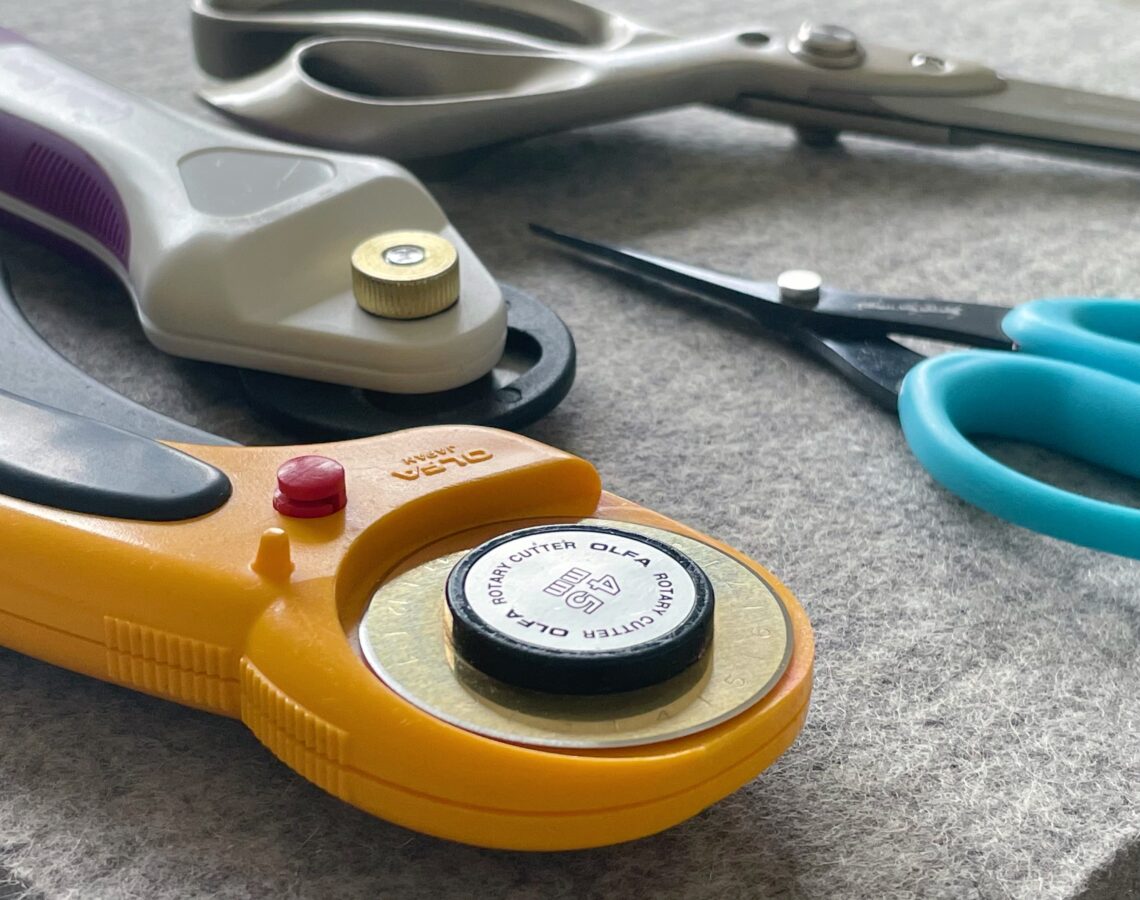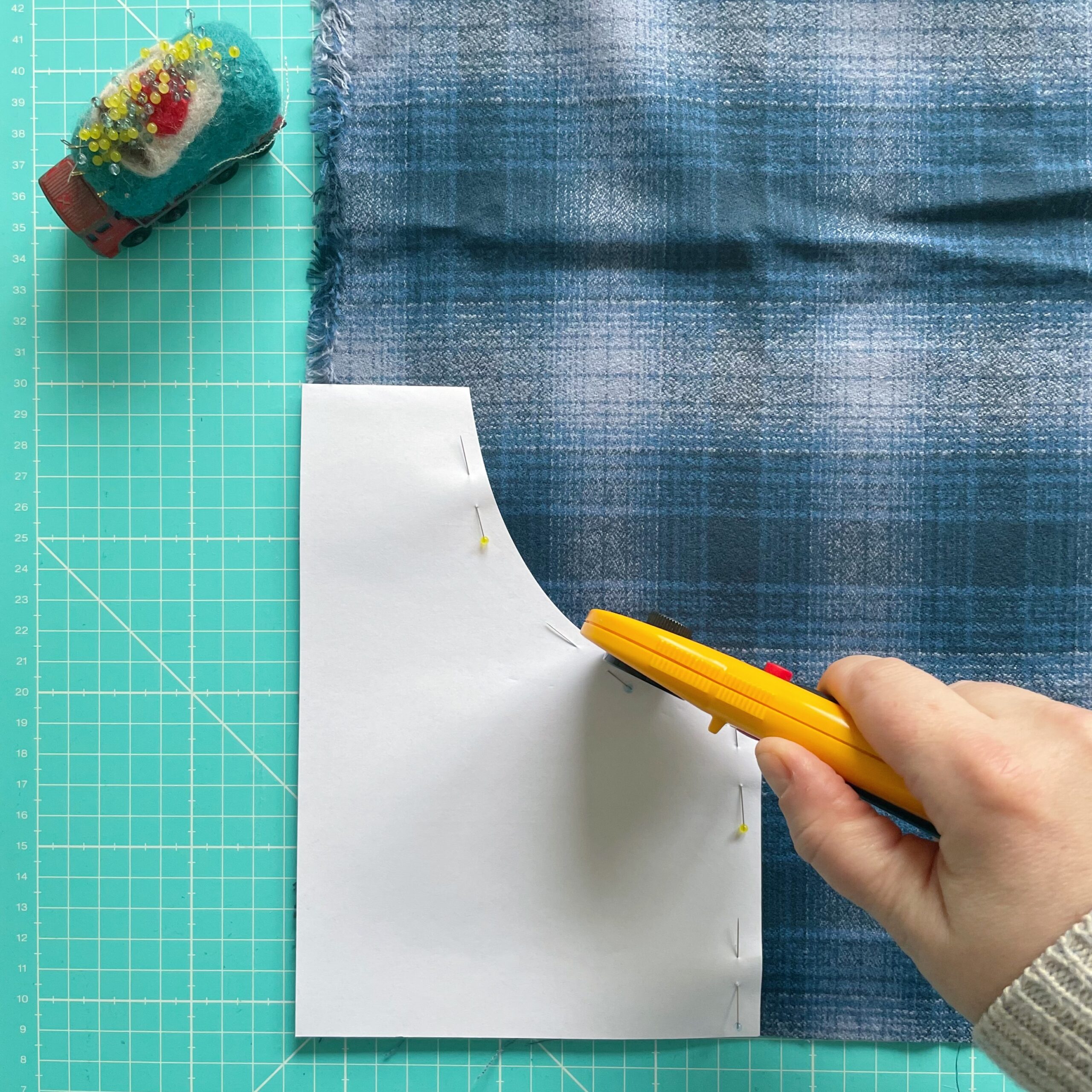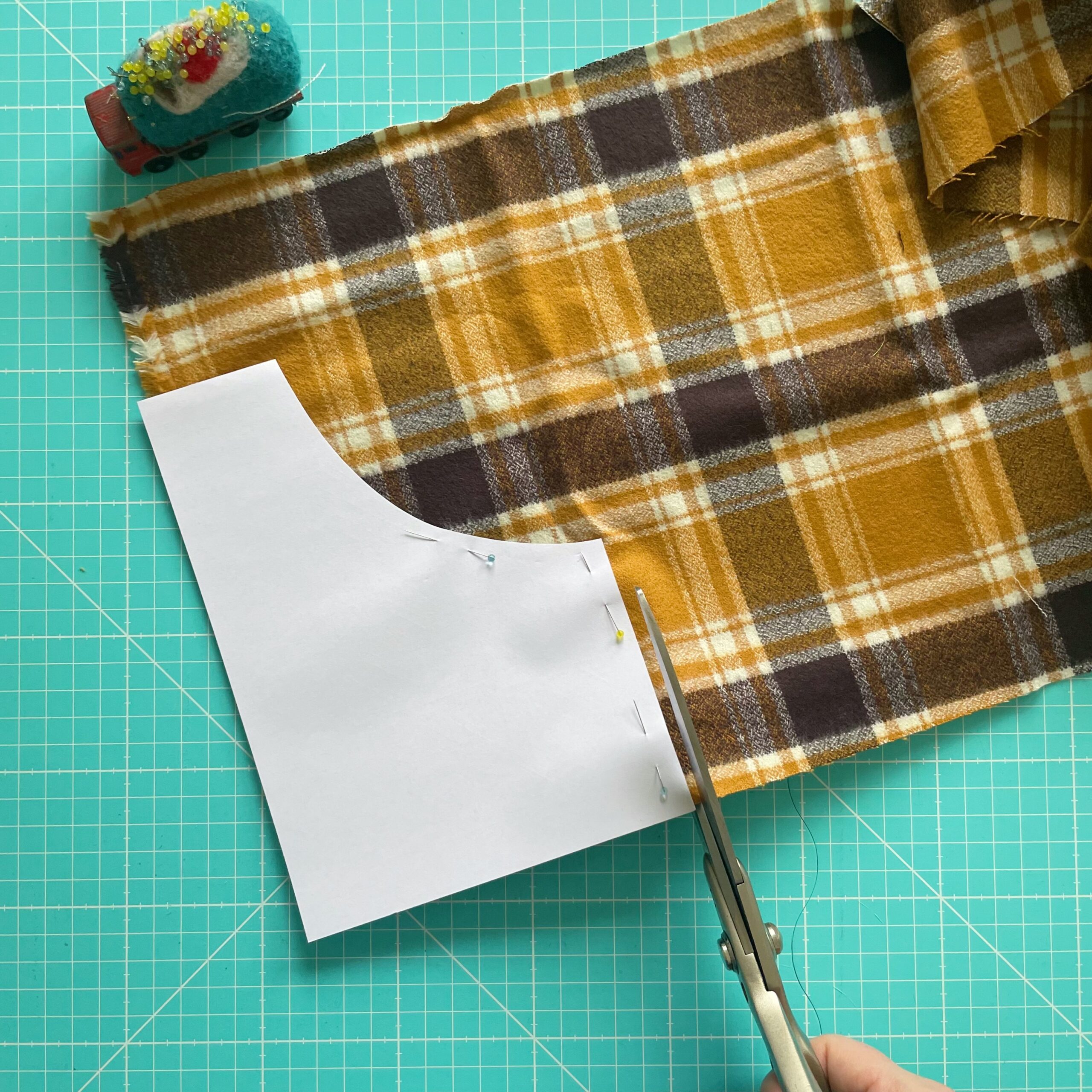This or That? Rotary Cutter and Scissors Edition.

There are lots of different tools that you might find useful when making clothes and accessories but there’s one thing that’s definite…you’re going to need to cut out some fabric. The main tools for this are scissors and rotary cutters but how do you choose between them?
Our third blog post in the This or That series compares rotary cutters and scissors. What are the pros and cons to both of these tools? Both do the same job but is one a better choice for certain patterns and different fabrics types? Read on to find out more…
Rotary Cutter Vs. Scissors

Rotary Cutter
Rotary cutters are great because they:
- come in a variety of styles with handles to suit different grips and hand positions
- are quicker to use; no opening/close action whilst moving along, just roll and it cuts
- have easily replaceable blades so you keep the handle you are comfortable with using and only swap the blunt blade
- can be used with various blades; as well as a straight cutting blades you can buy other styles like wavy blades for pinking
- can be switched between left and right handed by moving the blade (always check your brand/model has this option!)
But rotary cutters aren’t perfect because:
- they need to be used with a cutting mat so that’s an extra tool you’ll need to buy and store
- replacing the blade can be a bit fiddly, although this very much depends on the brand/model
- it’s more difficult to get an accurate cut on tight corners; having a smaller blade helps with this issue but you’ll need a second rotary cutter as you can’t use different sized blades on one handle
- accidentally cutting yourself with a rotary cutter is much easier than with a pair of scissors
- depending on the design, the sharp blade can be left exposed when you put the cutter down; it’s really important to form safe habits when using a rotary cutter, especially if you have children or pets, and always remember to manually retract the blade when not in use or buy a model with a blade that automatically retracts when the cutter is not being held

Scissors
Scissors are great because they:
- can be used alone; you don’t need anything like a cutting mat
- are relatively easy to re-sharpen so you don’t have to buy a new pair when they become blunt
- are something you are more likely to already have at home; although fabric-specific scissors are better, any very sharp scissors will do the job of cutting fabric just fine
But scissors aren’t perfect because:
- the repetitive cutting action of opening and closing can become tiring on your hand
- if you are left-handed then you’ll need a separate pair of scissors, you can’t just move a right handed pair around (I’ve never come across scissors that can be changed between right and left-handed)
- they are a more commonly used item in general, for lots of different non-sewing related tasks, so they are much more likely to go missing from your sewing space
How to choose which to use
As with so many sewing tools, choosing one type over another is often down to personal preference and the same can largely be said about rotary cutters and scissors. However, there are a handful of occasions when one could be a better choice over the other…
I prefer using a rotary cutting on stretch fabrics; as you don’t need to lift the fabric when using a rotary cutter and this avoids the potential risk of stretching the fabric whilst cutting. When cutting fabrics that can easily fray, like woven cotton or linen (for patterns like Heyday Dungarees or High Tide Trousers) I find that I get a cleaner cut edge with a rotary cutter which helps to reduce the amount of fraying.
You’ll need to use scissors on patterns that requires clipping into a curve (like the Sandcastle Bucket Hat and the Dreamer Shirt) and, as was mentioned earlier, scissors can be better for curves in general, especially very tight ones. There are some fabrics for which scissors are a better choice too. Fabrics with a fluffy pile, like faux fur and sherpa fleece, shed less if you use scissors to cut them and carefully avoid cutting extra pile, something which is almost impossible to do with a rotary cutter.

Leave a Reply